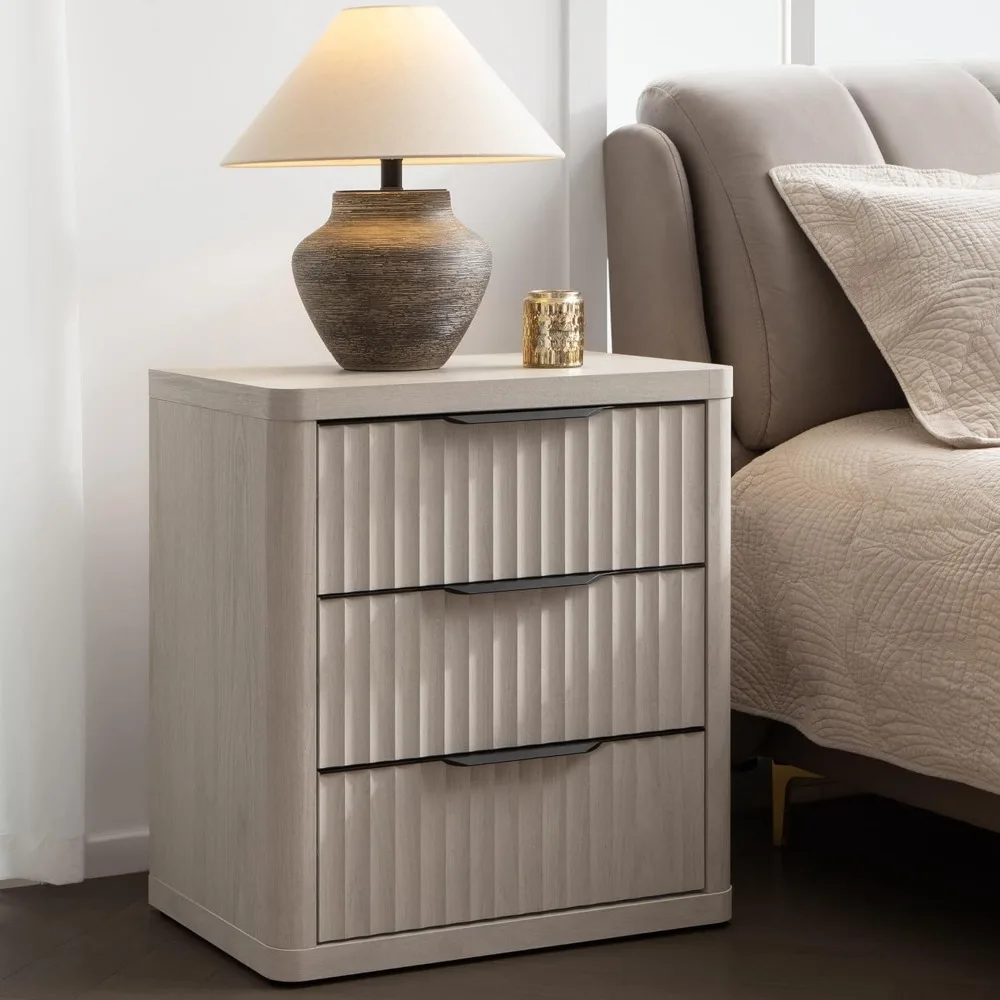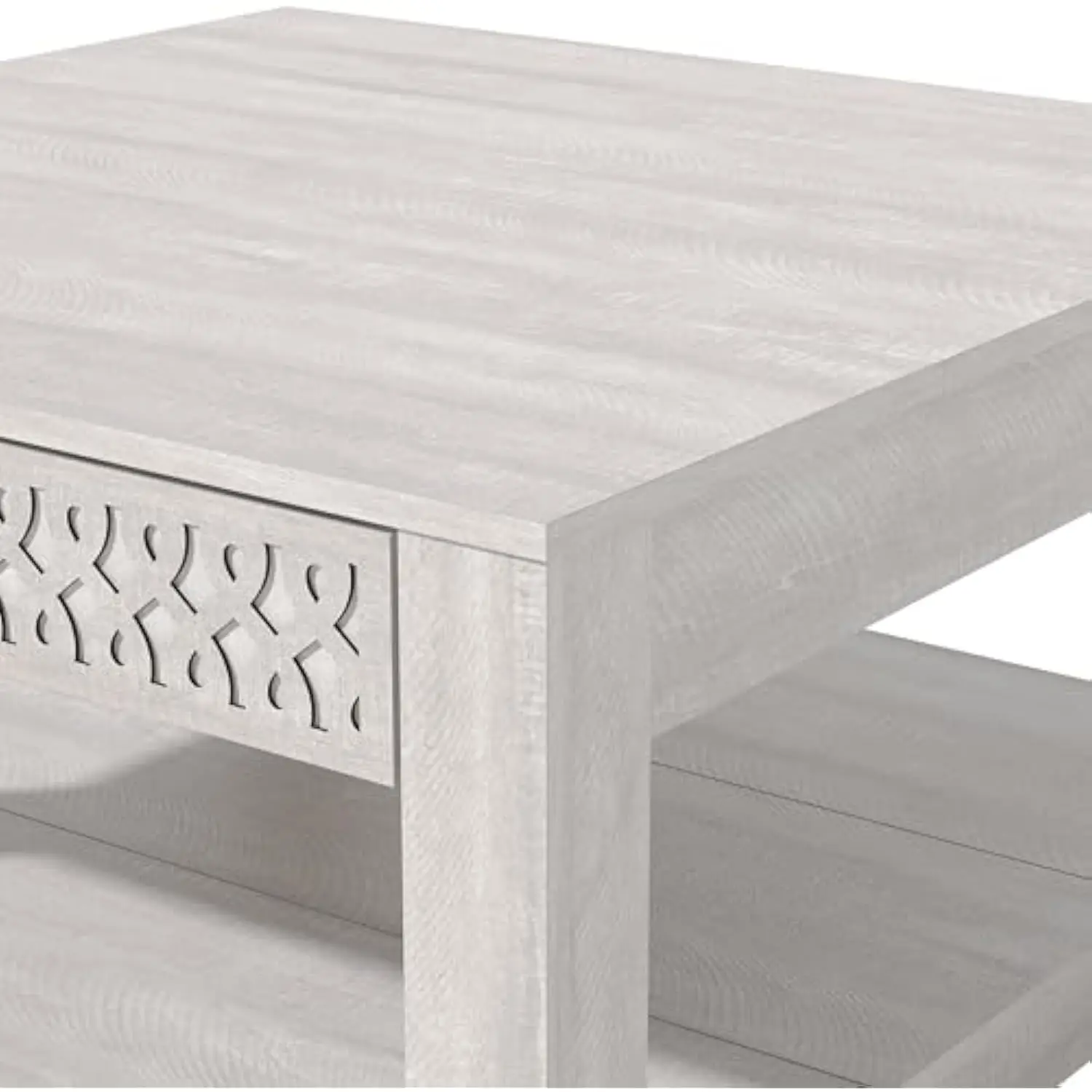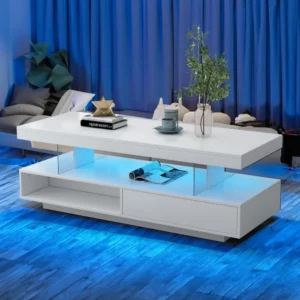Introduction: The Timeless Beauty of Teak Grain
Teak wood stands apart in the world of fine furniture with its distinctive golden honey color and straight grain that features a silky, smooth texture. What makes teak truly special is its high natural oil content, which gives the wood an inherent luster and resistance to the elements. This remarkable hardwood has earned its reputation as one of the most prized materials for furniture making, especially in the realm of mid-century modern design where clean lines and natural materials take center stage.
The intrinsic beauty of teak lies in its grain patterns – those unique fingerprints of nature that tell the story of the tree’s growth. When crafting a teak table, preserving and enhancing these patterns becomes essential to showcase the wood’s full character. A well-finished teak table doesn’t just serve a functional purpose; it becomes a focal point that brings warmth and natural elegance to any room.
Designer’s Note: Teak’s natural oils contain compounds called oleoresins that provide exceptional resistance to rot, insects, and water damage – the same properties that made it the premier choice for maritime applications for centuries.
As we explore finishing options for teak tables, we’ll navigate the delicate balance between enhancing the wood’s natural beauty and providing the protection necessary for a functional surface. From penetrating oils that nourish the wood from within to surface finishes that create protective barriers, the goal remains constant: to honor and highlight the extraordinary grain patterns that make intelligent black mid-century coffee tables and other mid-century modern teak coffee tables such coveted pieces.
Understanding Teak’s Unique Properties and Finishing Challenges
Teak presents both unique advantages and distinct challenges when it comes to finishing. At the heart of these considerations is teak’s remarkably high natural oil content. Unlike many other hardwoods, teak contains natural oils called oleoresins that comprise up to 7% of the wood’s weight – significantly higher than most furniture woods. These oils give teak its legendary water resistance and contribute to its exceptional durability.
This natural oil content creates a double-edged sword for finishing. On one hand, it means teak requires less protection than other woods. On the other hand, these oils can interfere with the adhesion and curing of certain finishes, particularly film-forming ones like polyurethane or lacquer. The oils can continue to seep through some finishes over time, potentially causing adhesion failures or cloudy spots in the finish.
Teak’s density further complicates matters. With a Janka hardness rating of approximately 1,000 lbf, teak is moderately hard but extremely dense, which affects how different finishes penetrate and adhere to the surface. This density means some finishes may remain more on the surface rather than deeply penetrating the wood.
Notable characteristics of teak that affect finishing include:
- High silica content (up to 1.4%) that contributes to its durability but can dull tools and sandpaper quickly
- Natural resistance to rot, fungi, and insects due to protective compounds in the wood
- Tendency to naturally patina to a silvery gray color when left unfinished and exposed to UV light
- Moderate to high dimensional stability, meaning less expansion and contraction with humidity changes
Understanding these properties is crucial when selecting a finish for teak. The ideal approach works with teak’s natural characteristics rather than fighting against them. Different regions produce teak with slightly varying properties – teak wood grain variations by region can influence finishing considerations and outcomes.
What to Consider When Choosing a Teak Table Finish
Selecting the ideal finish for your teak table involves balancing several factors that affect both appearance and functionality. Since tables experience different types of use compared to decorative wood pieces, understanding these considerations will help you make an informed decision that preserves both beauty and practicality.
When evaluating potential finishes for your teak table, focus on these four key factors:
Grain Enhancement: The primary goal for many teak owners is to highlight the wood’s distinctive grain patterns. Different finishes interact with teak’s natural oils and cellular structure in various ways, either deepening the color to enhance grain visibility or maintaining a more natural appearance.
Protection Level: Tables face spills, heat, impacts, and daily use. Consider how much protection your table needs based on its location and intended use. Dining tables generally require more protection than occasional tables.
Maintenance Requirements: Some finishes need regular reapplication, while others provide years of service before requiring attention. Be realistic about how much maintenance you’re willing to perform.
Aesthetic Impact: Each finish affects teak’s color, sheen, and texture differently. Consider whether you prefer the warm honey tones of freshly finished teak or would rather allow the wood to develop a natural patina over time.
| Finish Type | Grain Enhancement | Protection Level | Maintenance | Aesthetic Impact |
|---|---|---|---|---|
| Penetrating Oils | High | Low to Moderate | Regular (6-12 months) | Natural, warm tone |
| Clear Varnishes | Moderate to High | High | Low (3-5 years) | Glossier, amber tone |
| Hybrid Finishes | High | Moderate | Moderate (1-2 years) | Natural with subtle sheen |
| Specialty Finishes | Varies | Varies | Varies | Unique effects |
The balance between aesthetics and practicality becomes particularly important for table surfaces. While a purely decorative piece might prioritize appearance over durability, tables must withstand the rigors of daily use while still showcasing the beauty of the wood.
Indoor and outdoor considerations also play a role in finish selection. While this guide primarily focuses on indoor teak tables, many of the principles apply to exterior pieces as well, though outdoor finishes typically require more frequent maintenance and UV protection.
As you explore the various solid wood coffee tables available, consider how different finishes might enhance their appearance and longevity. Each of the finish categories we’ll explore offers a distinct approach to showcasing teak’s natural beauty.
1. Penetrating Oils: Maximizing Natural Grain Definition
Penetrating oils represent perhaps the most traditional and natural approach to finishing teak. Rather than forming a film on the surface of the wood, these oils soak into the fibers, nourishing the wood from within and bringing out the depth and dimension of teak’s grain patterns. This approach creates a finish that feels like the wood itself, with no artificial layer between your hand and the teak’s natural texture.
Oil Types for Teak Enhancement
| Oil Type | Grain Enhancement | Water Resistance | Color Effect | Drying Time | Best For |
|---|---|---|---|---|---|
| Pure Tung Oil | Excellent | Very High | Amber, rich | 24-48 hrs between coats | Maximum water protection |
| Boiled Linseed Oil | Very Good | Moderate | Golden, warm | 12-24 hrs between coats | Rich color development |
| Danish Oil | Very Good | Good | Warm, subtle | 8-12 hrs between coats | Ease of application |
| Specialized Teak Oil | Excellent | High | Natural enhancement | 12-24 hrs between coats | Overall balance |
Pure Tung Oil offers exceptional water resistance once fully cured and creates a deep, rich finish that enhances grain without appearing artificial. Extracted from the nuts of the tung tree, this oil polymerizes (dries) through reaction with oxygen to form a durable, flexible finish that penetrates deeply into teak’s pores. The result is a satin sheen that feels like natural wood while providing moderate protection.
Boiled Linseed Oil (BLO) creates a slightly richer, warmer tone than tung oil but offers less water resistance. BLO contains drying agents (metal salts) that accelerate curing compared to raw linseed oil, making it practical for furniture applications. It particularly excels at bringing out depth and dimension in teak grain.
Danish Oil represents a hybrid approach, typically blending oil (often tung or linseed) with varnish resins and solvents. This combination creates a finish that penetrates like an oil but builds faster protection due to the varnish component. Danish oil is particularly well-suited to teak because it provides enough protection for table use while maintaining the natural look and feel of the wood.
Specialized Teak Oil formulations are designed specifically for teak’s unique properties, with formulations that account for the wood’s natural oil content. These products often contain UV inhibitors and special penetrants that work with teak’s natural resins rather than competing with them.
Application Process for Oils
The application process for penetrating oils on teak follows similar principles regardless of the specific oil:
- Apply thin coats – thick applications won’t penetrate properly and create sticky surfaces
- Allow proper absorption time (typically 15-30 minutes)
- Thoroughly wipe away excess oil before it dries
- Allow appropriate drying time between coats
- Apply 2-3 coats for tables (more for porous areas like end grain)
- Final buffing with fine cloth to enhance sheen
For tables, maintenance typically involves reapplication every 6-12 months, depending on use. The advantage of oil finishes is that localized repairs are simple – just clean the affected area and apply more oil.
When comparing the hand feel and appearance of oiled teak to film finishes, many enthusiasts of walnut furniture and mid-century walnut coffee tables prefer the natural sensation of oiled wood, which allows direct connection to the material’s texture while still providing enhanced color and subtle protection.
2. Clear Varnishes and Polyurethanes: Balancing Protection and Visibility
While penetrating oils offer a natural approach to finishing teak, clear varnishes and polyurethanes create a more substantial protective barrier while still allowing the wood’s beauty to shine through. These film-forming finishes sit on top of the wood surface, creating a durable layer that shields the teak from moisture, spills, heat, and wear – crucial considerations for heavily used tables.
Oil-Based vs. Water-Based Polyurethanes for Teak
Oil-Based Polyurethane
* Provides a warm, amber tone that enhances teak’s natural golden color
* Offers excellent grain definition by slightly darkening the wood
* Creates a rich depth that many find complements teak’s character
* Generally more durable than water-based options
* Requires longer drying times (8-12 hours between coats)
Water-Based Polyurethane
* Dries clearer with minimal color impact
* Preserves teak’s natural color with less yellowing over time
* Faster drying (2-4 hours between coats)
* Lower odor during application
* May appear slightly “plastic-like” unless special formulations are used
For teak specifically, oil-based polyurethanes often provide better results in terms of grain enhancement, though high-quality water-based formulations have improved significantly in recent years.
Application Challenges for Teak
Teak’s natural oils present unique challenges when applying film finishes:
- Natural oils can inhibit proper adhesion
- Oil migration can create cloudy spots under the finish over time
- Proper preparation is critical for success
To address these challenges:
1. Consider light sanding with acetone wipe-down to temporarily remove surface oils
2. Apply thin first coat (possibly thinned) to establish adhesion
3. Allow extended drying time between coats
4. Consider a sealer coat before full finish application
Sheen Options and Their Effect on Grain Perception
| Sheen Level | Effect on Grain Visibility | Best For |
|---|---|---|
| Matte | Natural appearance, hides minor imperfections | Casual, rustic styles |
| Satin | Balanced visibility with subtle luster | Most mid-century modern pieces |
| Semi-gloss | Enhanced depth with moderate reflection | Formal settings, shows grain detail |
| Gloss | Maximum light reflection and depth | Dramatic pieces, formal spaces |
Satin and semi-gloss finishes typically provide the best balance for teak tables, highlighting the grain without excessive reflection that can distract from the wood’s natural beauty.
Many Danish coffee tables feature polyurethane finishes that provide excellent durability while maintaining the clean aesthetic that defines Scandinavian design. With proper application, these finishes can last 5-10 years before requiring refinishing, making them practical choices for everyday table use.

3. Hybrid Finishes: Getting the Best of Both Worlds
Hybrid finishes represent an elegant compromise between penetrating oils and film-forming varnishes. These innovative products aim to provide the best attributes of both approaches: the natural look and feel of oils combined with enhanced protection comparable to surface finishes. For teak tables that need to balance beauty with practicality, hybrid finishes offer a compelling middle path.
What Makes a Finish “Hybrid”?
Hybrid finishes typically contain both penetrating oils that soak into the wood fibers and resins or waxes that build a protective layer. The key difference from traditional varnishes is that hybrid finishes create a more breathable, thinner protective layer that remains somewhat integrated with the wood rather than sitting entirely on top. This approach works particularly well with teak’s natural oils.
Top Hybrid Options for Teak Tables
Waterlox Original combines tung oil with resins to create a finish that penetrates deeply while building protection with multiple coats. The resin component provides enhanced durability and water resistance compared to pure tung oil, while the oil base ensures deep grain enhancement. Waterlox creates a rich amber tone that beautifully complements teak’s natural color.
Osmo Polyx Oil blends natural plant oils and waxes to create a microporous finish that allows the wood to breathe while repelling water and stains. This German product creates a satin sheen that enhances teak’s grain while maintaining a natural look and feel. The wax component provides good resistance to water rings and minor spills.
Rubio Monocoat utilizes plant-based hardwax oils that form a molecular bond with wood fibers through a catalyzed reaction. This creates extremely thin but durable protection with just one coat. Monocoat is particularly good at preserving the natural look of teak while providing reasonable protection. Its VOC-free formulation also appeals to environmentally conscious consumers.
Application and Maintenance
Hybrid finishes generally apply more like oils than varnishes:
- Apply sparingly with cloth, brush, or applicator
- Allow brief penetration time
- Remove excess thoroughly
- Allow appropriate curing time
- Apply additional coats if needed (product-specific)
Maintenance for hybrid finishes sits between oils and varnishes – typically requiring touch-up every 1-2 years for table surfaces, though spot repairs are relatively simple. Many Danish coffee table design guides recommend hybrid finishes as they align with Scandinavian preferences for natural wood appearance paired with practical durability.
Comparison to Pure Oils and Film Finishes
| Aspect | Pure Oils | Hybrid Finishes | Film Finishes |
|---|---|---|---|
| Grain Enhancement | Excellent | Very Good | Good |
| Protection Level | Low-Moderate | Moderate-Good | Excellent |
| Feel of Wood | Natural | Mostly Natural | Artificial |
| Repair Ease | Very Easy | Relatively Easy | More Difficult |
| Maintenance Frequency | High | Medium | Low |
4. Specialty Finishes for Unique Grain Effects
While traditional oils and varnishes remain the most common choices for teak, specialty finishing techniques offer unique ways to highlight teak’s grain patterns. These approaches can create distinctive effects that set your table apart while still honoring the natural beauty of the wood.
Cerusing/Liming involves using white or light-colored pigments to fill the grain lines, creating dramatic contrast between the grain and surrounding wood. This technique particularly excels with teak because of its prominent grain structure. The process involves applying a white or off-white liming wax or paste into the open grain after sealing the wood, then wiping away the excess to leave the white material only in the grain lines. The result is a sophisticated look that draws attention to the wood’s natural pattern.
Light Wood Stains can subtly alter teak’s color while maintaining grain visibility. For teak specifically, honey-toned or light amber stains can enhance the wood’s natural warmth without obscuring its character. Water-based stains tend to preserve grain patterns better than oil-based alternatives for teak, as they don’t compete with the wood’s natural oils.
Shellac represents one of the oldest wood finishes and creates a warm amber tone that beautifully enhances teak’s natural color. While not as water-resistant as modern finishes, shellac creates an incomparable depth and luster that many find irresistible. For tables, shellac can be used as an initial sealing layer under a more durable topcoat, giving the best of both worlds – shellac’s grain enhancement with a protective finish’s durability.
Two-Step Finishes combine different products to maximize both appearance and protection. A common approach for teak tables involves:
* Initial application of penetrating oil to enhance grain definition
* Topcoat of water-based polyurethane for protection
* Careful product selection to ensure compatibility
These specialty approaches work particularly well on vintage coffee tables where highlighting unique grain patterns can emphasize the piece’s character and history.
Essential Preparation for Maximum Teak Grain Definition
Regardless of which finish you select, proper preparation is the foundation of showcasing teak’s beautiful grain. The steps you take before applying any finish directly impact how well the grain patterns will be revealed and enhanced.
Step-by-Step Preparation Process
1. Clean the Surface Thoroughly
* For raw teak: Wipe with mineral spirits to remove surface oils
* For previously finished teak: Clean with appropriate cleaner based on existing finish
* Allow complete drying before proceeding
2. Sand Progressively
* Start with 120-grit for unfinished teak or 150-grit for refinishing
* Progress through 150, 180, and finally 220-grit
* Sand with the grain direction only, never against or across
* Take extra care with teak as its silica content dulls sandpaper more quickly than other woods
3. Remove Dust Completely
* Vacuum surface with brush attachment
* Wipe with tack cloth to remove fine particles
* Consider compressed air for intricate areas
4. Control Environmental Conditions
* Maintain temperature between 65-75°F (18-24°C)
* Keep humidity between 40-60%
* Ensure good ventilation without excessive dust
Pro Tip: For maximum grain definition, consider “raising the grain” before final sanding. Lightly dampen the wood with water, let dry completely, then sand lightly with final grit. This removes raised fibers for ultimately smoother finish application.
For previously finished surfaces, you’ll need to determine if the old finish needs complete removal or if you can sand and apply over it. Complete removal is generally recommended for teak to ensure the new finish properly bonds with the wood’s surface.
The preparation process directly impacts how well any finish will enhance teak’s grain. Rushing this stage almost always results in diminished grain visibility and potential finish failures. Various common wood finishes for coffee tables require specific preparation techniques, but these fundamental steps apply to all teak finishing projects.
Application Techniques That Enhance Grain Pattern Visibility
The way you apply your chosen finish significantly affects how well it enhances teak’s grain patterns. Each finish type requires specific techniques to maximize grain definition while ensuring proper protection and longevity.
Working With the Grain
For all finish types, always apply in the direction of the wood grain. This fundamental rule:
1. Ensures the finish penetrates grain patterns effectively
2. Prevents finish from pooling across grain lines
3. Reduces visible application marks
4. Allows the finish to follow the natural flow of the wood
Finish-Specific Application Techniques
For Penetrating Oils:
1. Apply with lint-free cloth in thin, even coat
2. Allow oil to penetrate for manufacturer-recommended time (typically 15-30 minutes)
3. Thoroughly remove all excess oil with clean cloths
4. Buff with soft cloth after drying to enhance luster
5. Apply additional thin coats rather than one heavy coat
For Varnishes and Polyurethanes:
1. Use high-quality natural bristle brush for oil-based or synthetic brush for water-based
2. Apply thin coats with minimal brush strokes
3. Brush with the grain using long, continuous strokes
4. Allow complete drying between coats
5. Light sanding (320+ grit) between coats improves smoothness and adhesion
6. Remove dust completely before applying next coat
For Hybrid Finishes:
1. Follow product-specific instructions carefully
2. Most apply using cloth, pad applicator, or specialized tool
3. Work in small sections for products that cure quickly
4. Remove excess according to manufacturer timing
5. Buff if recommended by product instructions
Common Application Mistakes
- Applying too thick a coat (particularly problematic with teak’s natural oils)
- Inadequate removal of excess finish
- Insufficient drying time between coats
- Working in poor lighting that obscures application quality
- Applying finish in extreme temperature or humidity conditions
For rectangular tables, consistent application technique is particularly important to ensure even finish appearance across the large surface. Rectangular coffee tables benefit from methodical application in sections, always working in the direction of the longest grain patterns.

Maintaining Your Finished Teak Table for Lasting Beauty
The care you provide after finishing your teak table determines how long the finish will protect the wood and how well the grain patterns will remain visible. Each finish type requires specific maintenance approaches to preserve both beauty and functionality.
Maintenance Schedule by Finish Type
| Finish Type | Regular Cleaning | Refreshing/Reapplication | Signs Maintenance Is Needed |
|---|---|---|---|
| Penetrating Oils | Mild soap and water, dry immediately | Every 6-12 months | Dull appearance, water doesn’t bead, dry-looking areas |
| Varnishes/Polyurethanes | Damp cloth with gentle cleaner | Every 3-5 years | Scratches, white marks, dull spots |
| Hybrid Finishes | Product-specific cleaner | Every 1-2 years | Loss of water repellency, dull areas |
| Specialty Finishes | Depends on specific finish | Varies by finish | Varies by finish type |
Cleaning Recommendations
For all finished teak surfaces:
* Use coasters under glasses and cups
* Clean spills promptly, especially alcohol and citrus juice
* Avoid harsh chemical cleaners or ammonia-based products
* Use trivets or pads under hot items
* Dust regularly with soft, lint-free cloth
Spot Repair Techniques
For Oiled Finishes:
1. Clean affected area
2. Lightly sand with fine grit (320+) if necessary
3. Apply matching oil to area
4. Wipe excess and blend with surrounding areas
For Film Finishes:
1. Clean thoroughly
2. Lightly sand damaged area
3. Apply matching finish to spot
4. Blend edges with existing finish
5. Consider full recoating if repair is visible
Proper maintenance ensures that your teak table will continue to showcase its beautiful grain patterns for years to come. The natural oils in teak contribute to its longevity, but even the most durable finishes require some ongoing care, particularly for black mid-century coffee table designs where maintaining consistent appearance is important.
Choosing the Right Finish for Your Specific Teak Table
Selecting the optimal finish for your teak table involves assessing your specific needs, preferences, and how the table will be used. This decision framework can help guide your choice:
Decision Factors to Consider
Usage Intensity:
* High use (dining tables, family room tables): Consider polyurethane or quality hybrid finishes
* Moderate use (occasional tables): Hybrid finishes or quality penetrating oils
* Light use (display pieces): Any finish type based on aesthetic preference
Aesthetic Priority:
* Maximum natural look and feel: Penetrating oils
* Balance of natural appearance and protection: Hybrid finishes
* Maximum protection with good looks: Quality water-based polyurethane
* Special visual effects: Specialty techniques like cerusing or two-step approaches
Maintenance Willingness:
* Minimal maintenance preferred: Polyurethane (recoat every 3-5 years)
* Willing to do occasional maintenance: Hybrid finishes (refresh every 1-2 years)
* Comfortable with regular care: Oil finishes (reapplication every 6-12 months)
Indoor vs. Outdoor Placement:
* Indoor only: All finish types suitable based on other factors
* Indoor/outdoor transition areas: Marine-grade varnish or quality hybrid finishes
* Full outdoor exposure: Marine varnish, specialized outdoor oils, or unfinished (allow to patina)
For those focused on teak table aesthetics in modern living spaces, the finish choice significantly impacts how the piece integrates with your overall design scheme. Consider how the table’s finish complements other wood tones in your space and whether you want the teak to be a statement piece or blend harmoniously with surrounding elements.
Mid-Century Modern Solid Wood Coffee Tables, Mid-Century Modern Teak Coffee Tables
$879.95 Select options This product has multiple variants. The options may be chosen on the product pageMid-Century Modern Danish Coffee Tables, Mid-Century Modern Oval Coffee Tables, Mid-Century Modern Solid Wood Coffee Tables
$390.05 Select options This product has multiple variants. The options may be chosen on the product pageMid-Century Modern Glass Top Coffee Tables, Mid-Century Modern Vintage Coffee Tables, Mid-Century Modern Vintage Side & End Tables
$725.36 Select options This product has multiple variants. The options may be chosen on the product pageMid-Century Modern Large Coffee Tables, Mid-Century Modern Rectangular Coffee Tables
$603.26 Select options This product has multiple variants. The options may be chosen on the product pageMid-Century Modern Marble Top Coffee Tables, Mid-Century Modern Rectangular Coffee Tables, Mid-Century Modern White Coffee Tables
Price range: $163.28 through $189.22 Select options This product has multiple variants. The options may be chosen on the product pageMid-Century Modern Rectangular Coffee Tables, Mid-Century Modern White Coffee Tables
$605.68 Select options This product has multiple variants. The options may be chosen on the product page
Does Teak Really Need a Finish At All?
An important consideration often overlooked in discussions about teak finishing is whether this remarkable wood needs a finish at all. Teak’s exceptional natural properties make it one of the few woods that can legitimately be left unfinished, particularly in certain applications.
The Case for Unfinished Teak
Teak contains natural oils and rubber compounds that provide inherent protection against moisture, insects, and decay. When left unfinished, teak undergoes a natural weathering process that gradually transforms its golden honey color to a distinguished silvery-gray patina. Many enthusiasts specifically prize this patinated appearance for its organic, timeless quality.
Benefits of Unfinished Teak:
* Natural patina development that many find aesthetically pleasing
* No chemicals or solvents required
* Extremely low maintenance (occasional cleaning only)
* No finish to wear away, chip, or peel
* Truly showcases the wood’s natural properties
Considerations for Unfinished Teak:
* Natural patina may not provide desired color (silvery-gray vs. warm golden)
* Less protection against staining from food, wine, etc.
* Surface may feel rougher as fibers raise with moisture exposure
* Color change occurs unevenly initially (uniform patina develops over time)
Maintenance of Unfinished vs. Finished Teak
Unfinished teak requires remarkably little maintenance – occasional cleaning with mild soap and water is typically sufficient. Some owners choose to gently scrub the surface once or twice a year to remove surface dirt and even out the patina development.
In contrast, even the most durable finishes require periodic refreshing or reapplication. For tables specifically, unfinished teak may be more susceptible to food and beverage staining, making it potentially better suited to occasional tables rather than dining surfaces.
Many black mid-century coffee tables contrast beautifully with the silvery patina of unfinished teak, creating sophisticated design statements that honor the natural character of both materials.

Is Wood Grain Direction Important When Finishing Teak?
Wood grain direction plays a crucial role in how finishes interact with teak and ultimately affects the visual impact of the finished piece. Understanding and working with grain direction helps maximize the beauty of teak’s distinctive patterns.
Identifying Teak Grain Direction
Teak typically exhibits relatively straight grain, though it can sometimes include areas of irregular or interlocked grain. To identify grain direction:
- Look at the edge of the board where end grain is visible
- Follow the lines that run parallel to the length of the board
- Note that grain may change direction or swirl in certain areas
- Feel the surface – it will feel smoother when rubbed with the grain
How Grain Direction Affects Finishing
When applying finishes, working with the grain direction:
* Allows the finish to penetrate more effectively
* Reduces finish resistance during application
* Minimizes visible brush or applicator marks
* Enhances rather than fights the wood’s natural structure
This principle is particularly important for round coffee tables where grain direction may change across the table surface. In these cases, working from the center outward while following the grain pattern produces the best results.
Working with Complex Grain Patterns
Teak occasionally presents figured grain, swirls, or areas where the grain changes direction. In these cases:
* Identify the dominant grain direction in each section
* Apply finish in smaller areas, following local grain patterns
* Use circular or varied application techniques where grain is complex
* Take extra care in these areas during sanding to avoid cross-grain scratches
Properly working with grain direction throughout the finishing process ensures that the final result highlights teak’s beautiful natural patterns rather than obscuring them.
Can You Change or Remove a Finish if You Don’t Like the Results?
Even with careful selection and application, sometimes a finish doesn’t achieve the desired look or fails to perform as expected. Fortunately, most finishes applied to teak can be removed or altered if necessary.
Removing Different Finish Types
Oil-Based Finishes:
1. Wipe with mineral spirits to remove surface oil
2. For deeper penetration, use a stronger solvent like acetone or lacquer thinner
3. May require multiple applications for complete removal
4. Follow with light sanding once solvents have fully evaporated
Film-Forming Finishes:
1. Chemical strippers specifically formulated for the finish type work best
2. Apply according to manufacturer directions
3. Scrape away softened finish with plastic scraper
4. Neutralize stripper according to product instructions
5. Allow wood to dry completely before refinishing
Hybrid Finishes:
1. Typically require similar approach to film finishes
2. May respond to mineral spirits first before requiring stronger strippers
3. Follow product-specific removal recommendations when available
Testing Before Full Removal
Always test finish removal methods in an inconspicuous area first:
1. Apply remover to a small hidden section
2. Assess effectiveness and any impact on the teak
3. Adjust approach based on results
4. Proceed with full removal only when confident in the method
When decorating with coffee tables of any material, the finish contributes significantly to the piece’s visual impact. If a finish doesn’t enhance your decor as expected, knowing you can safely remove and replace it provides valuable flexibility.
Safety Considerations
When removing finishes:
* Work in well-ventilated areas
* Use appropriate protective equipment
* Follow all product safety instructions
* Dispose of used materials properly
* Allow adequate drying time before applying new finishes
With proper techniques and patience, teak can be successfully refinished multiple times, allowing you to adapt your table’s appearance as your preferences or decor change over time.







